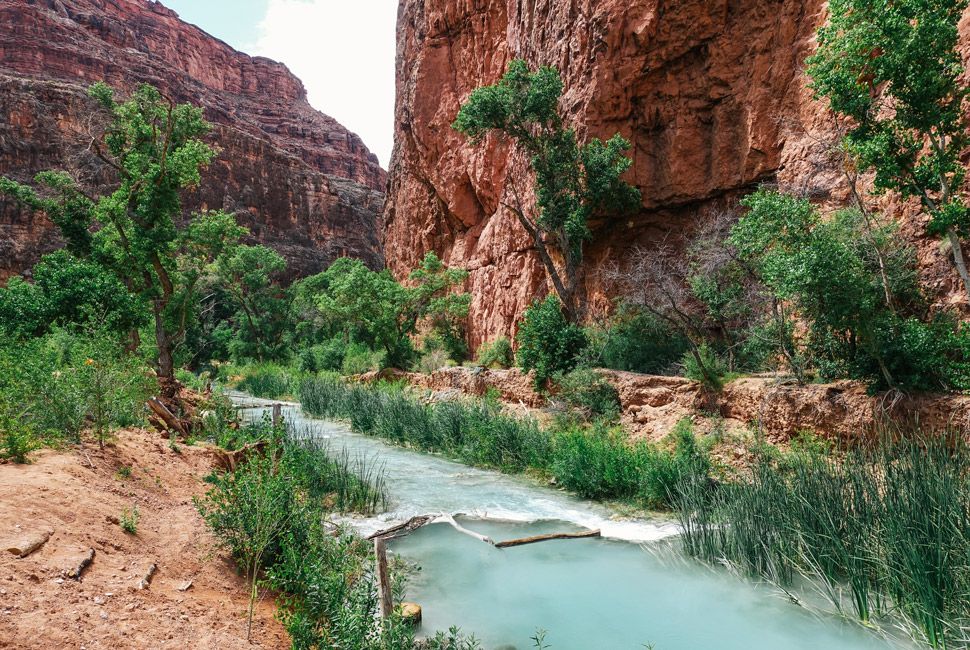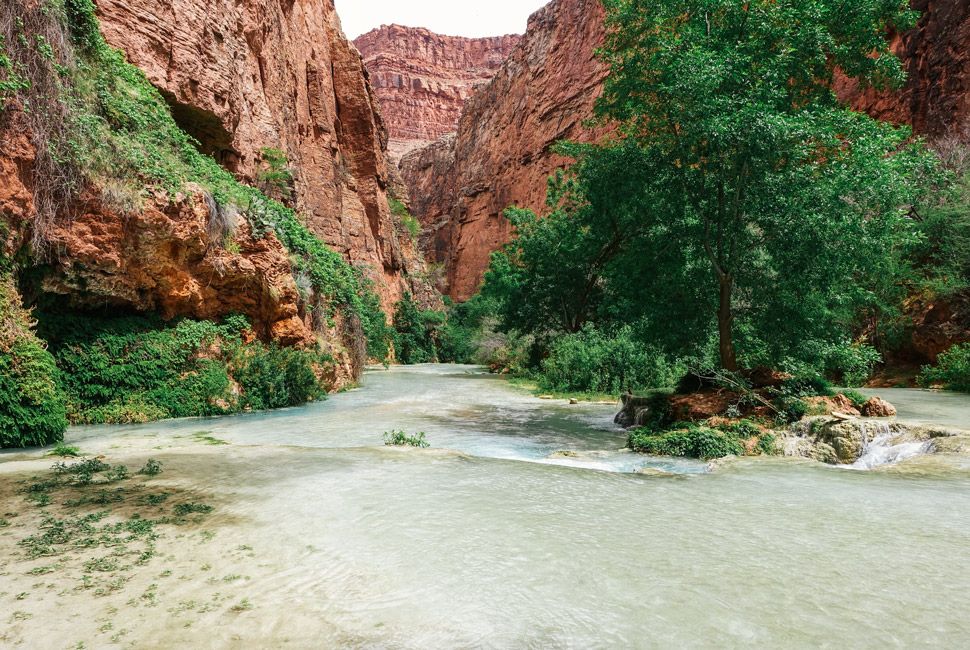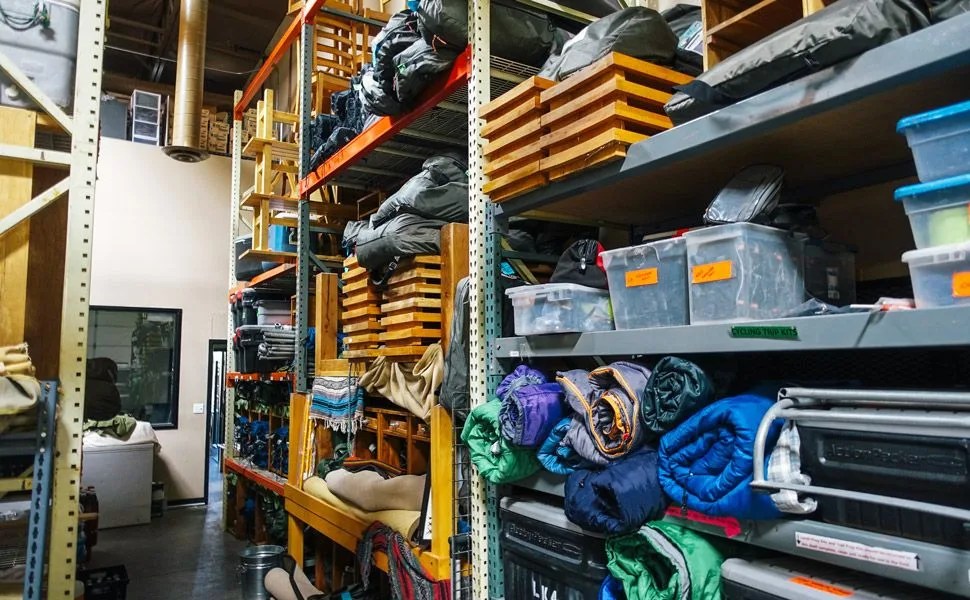4 photos
Last year, a man stood atop a rocky outcropping on a canyon wall near Havasu Falls, looking down at the pool 35 feet below. He had successfully done the jump the previous year, plunging like a pencil into the deep water. Now, he prepared for his encore. He shook the jitters from his knees and placed his feet at the edge. He took a deep breath. But as he threw his arms back to jump, he heard something. Looking down, he saw a man running with his hands crossed over his head, screaming loudly. The man darted out into the middle of the pool — the one that had been over 10 feet deep the previous year — and stood there, knee deep. He looked straight up and waved his arms. “Don’t jump!” he yelled.
That man on the ground, who happened to be a multi-day guide coincidentally passing by with his group, saved our dear friend on the cliff from finding out what it feels like to have his femur go through his throat. It is this example, amongst a sea of them, that illustrates how dangerous a living, breathing ecosystem can be, and how easy it is, even for the experienced, to get into trouble within them. Despite this, the job of guiding people through these places is not always taken so seriously. From an outdoorsman’s perspective, guides are perceived as doing for a living what most do for a hobby, getting paid to hike and bike and camp and raft. But how does that perception translate into reality? Isn’t it just a tick more serious than that?
In the beginning of May, I teamed up with Arizona Outback Adventures (AOA) to answer those very questions. Last year, I was a guest on one of its trips to Havasupai Falls in the Grand Canyon, and I thought going again on the same trip, this time as a guide, would help me to understand not only the reality of a guide’s life, but if and how a guide’s responsibilities change the relationship between the outdoorsman and the outdoors. What does it take to really exceed expectations as a guide? Would the wonder of Havasu Falls be the same, or would the guests blind me to its beauty this time around?
I hoped to learn what being a guide was all about, and what it takes to be a great one.
To find out, I assumed the role of a trainee guide on a six-day, five-night trip. There were 12 guests, all of whom were under the impression that I had just come on with the company and that this was my first trip as a guide. This allowed me to get involved but maintain an excuse for any suspicions that might arise from shortcomings in my performance. My duties were to provide support to the two main guides (three of us total). The trip would involve picking up the guests in a 15-passenger van and transporting them the four hours from Scottsdale to the Havasupai trailhead and back; guiding the guests on the 10-mile trail to Havasu Falls and back; building camp (setting up guest tents and a kitchen) and breaking down camp; providing and cooking three meals a day; guiding the guests on daily hikes; providing expert insight and information about the area; and, of course, ensuring the safety of each guest.
Each person paid $2,699 for the trip, so expectations of quality, from the food to the fun facts, were absolutely present. Because of my limited training, I was never put in a position where I was solely responsible for the well-being of the guests. My trip leader and AOA Guide Supervisor, Chris Anderson, is a veteran guide with more than 10 years’ experience in his early 30s. From him, I hoped to learn what being a guide is all about, and what it takes to be a great one.






